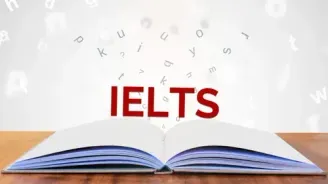Why Does Skin Wrinkle In Water Reading Answer Passage
Why Does Skin Wrinkle In Water Reading Answer Passage
Paragraph A. Thousands of years after the invention of the bath, scientists have come up with a theory to explain why our fingers and toes wrinkle when stepped in water. Puckered or wrinkled skin gives a better grip and may have helped our ancestors uproot wet plants when foraging for food or be steadier and more sure-footed in a slippery, wet environment, they say. Writing in Biology Letters, Tom Smulders, an evolutionary neurobiologist at Newcastle University suggests that it may be an evolutionary development, "Going back in time, this wrinkling could have helped with gathering food from wet vegetation or streams. The analogous effect in the toes could have helped our ancestors get a better footing in the rain,' he says.
Paragraph B. The familiar wrinkles on wet fingers and toes may also have benefitted early humans in their first forays into technology. 'It might have helped handling tools in wet conditions,' Smulders added, such as fixing hunting weapons in the rain or fishing with harpoons.
Paragraph C. It is popularly believed that fingertips absorb water and swell up, making the skin ripple with tiny folds. But, this was proved to be incorrect by studies that showed the effect disappeared when the nerves in the fingers were damaged. Rather than swelling up, fingertips shrink when they wrinkle because the blood vessels New Courses inside them contract. The effect is controlled by the autonomic nervous system, which also governs breathing and heart rate.
Paragraph D. Smulders investigated the benefits of wrinkled fingers after reading a paper by Mark Changizi, director of human cognition at 2A I Labs in Idaho. His report in the journal Brain, Behavior and Evolution suggested that wrinkles on fingers resemble car treads and the network drainage systems seen on mountains.
Paragraph E. In the latest study, Smulders had 20 people move 45 submerged marbles and fishing weights from one container to another. The objects were plucked one at a time, with the forefinger and thumb of the right hand, passed through a hole in a screen separating the containers and into the thumb and forefinger of the left hand. Smulder timed them on the task, once when they had dry and unwrinkled hands before starting, and again after they had soaked their hands in water for half an hour.
Paragraph F. The task took between 90 and 150 seconds to complete, but those with wrinkled fingers moved the wet objects 15 seconds faster on average, compared with those who began with dry hands. Wrinkles made no difference to the time it took to do the task with dry objects, according to the study reported in Biology Letters. 'It could be working like treads on your car tyres, which give you a better grip,' said Smulders.
Paragraph G. The findings raise the question of how, and from which species, humans inherited their wrinkling skin. 'My guess is that all primates have pruney fingers, but our only evidence at the moment beyond humans is from macaques,' said Changizi. At his lab in Idaho, Changizi has done a similar, though more rudimentary, experiment and reached the same conclusions as the Newcastle team. 'The obvious application here is biologically inspired rain treads for your shoes,' Changizi said. 'We'd ideally like to have shoe treads with the right wrinkle shapes for our foot topography. And we'd ideally like to have the treads flatten so that the entire shoe grips the ground once the water is squirted out through the channels.
Paragraph H. One question that remains is why fingers are not wrinkled all the time, even when they are not in water. The answer may be that wrinkling comes at a cost: the loss of sensitivity.
Let’s explore the questions and answers of the Why Does Skin Wrinkle In Water reading answer passage.
Why Does Skin Wrinkle In Water Reading Answers with Sample Questions
Have you read the passage? Now, take the test and find Why Does Skin Wrinkle In Water Reading answers! Try to answer these questions by yourself before you sneak a peek at the answers given below.
Check Out Top 50+ IELTS Reading Practice Test Questions with Answers
Below are some top 50+ free IELTS Reading Practice test online questions with detailed answers to enhance your IELTS preparation online. We have provided sample passages for each test type for your reference.
- What Is Exploration Reading Answers
- Effects Of Noise Reading Answers
- The Discovery Of Baby Mammoth Reading Answers
- The Dead Sea Scrolls Reading Answers
- The Ring-Tailed Lemur Reading Answers
- Why We Need To Protect Polar Bears Reading Answers
- Nutmeg A Valuable Spice Reading Answers
- What Is Meaning Reading Answers
- Cutty Sark Reading Answers
- The Step Pyramid Of Djoser Reading Answers
- South Pole Adventurer Reading Answers
- The Future Of Work Reading Answers
- Ambergris Reading Answers
- Trees In Trouble Reading Answers
- Could Urban Engineers Learn From Dance Reading Answers
- The Flavour Of Pleasure Reading Answers
- The Value Of A College Degree Reading Answers
- Why You Should Delegate Tasks To Team Members Reading Answers
- Corporate Social Responsibility Reading Answers
- Forest Management In Pennsylvania USA Reading Answers
- Making Time For Science Reading Answers
- The Power Of Play Reading Answers
- Coastal Archaeology Of Britain Reading Answers
- How The Other Half Thinks Reading Answers
- Changes In Reading Habits Reading Answers
- The Forgotten Forest Reading Answers
- When Conversations Flow Reading Answers
- Attitudes Towards Artificial Intelligence Reading Answers
- The Ingenuity Gap Reading Answers
- A Bar At The Folies Reading Answers
- Booking A Wessex Cottages Holiday Reading Answers
- Sunset Tours Reading Answers
- Bird Migration Reading Answers
- Clutter Bugs Beware Reading Answers
- The Hidden Histories Of Exploration Exhibition Reading Answers
- Calisthenics Reading Answers
- Having A Lovely Time Reading Answers
- The Return Of Huarango Reading Answers
- Summer Activities At London Kew Gardens Reading Answers
- Computer Games For Preschoolers Reading Answers
- Extinct The Giant Deer Reading Answers
- Micro Enterprise Credit For Street Youth Reading Answers
- Plain English Campaign Reading Answers
- Glow Worms Reading Answers
- How To Prepare For An Interview Reading Answers
- Quiet Roads Ahead Reading Answers
- Sculpture Reading Answers
- Cornwall Reading Answers
- Latchkey Children Reading Answers
- Healthy Intentions Reading Answers
- Makete Integrated Rural Transport Project Reading Answers
- Allergy Testing Reading Answers
- Life Casting And Art Reading Answers
- Metropolis Movies Reading Answers
- The Bridge That Swayed Reading Answers
- The Discovery Of Uranus Reading Answers
- The Extraordinary Watkin Tench Reading Answers
- The Secret Schizoid Reading Answers
- The Sun A Mixed Blessing Reading Answers







